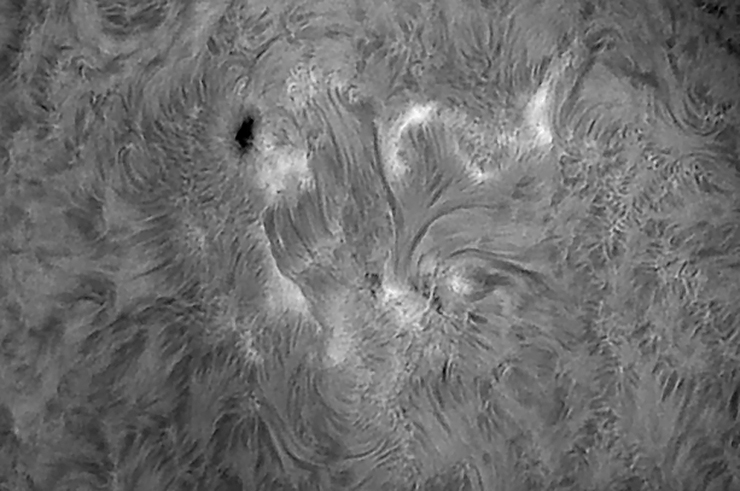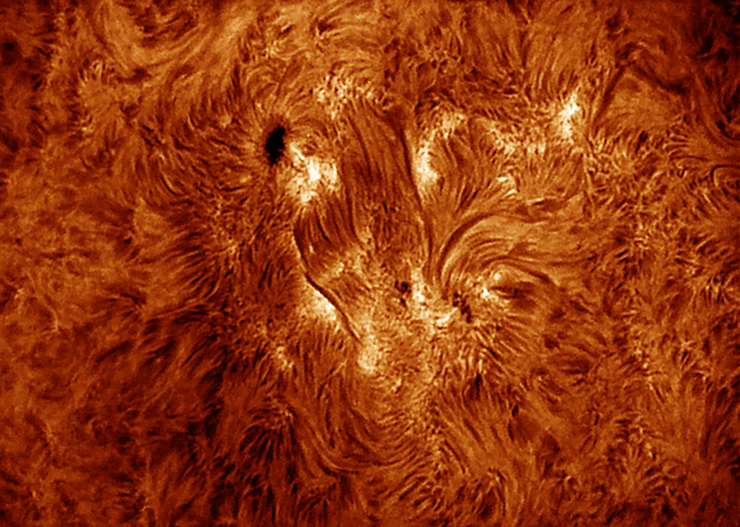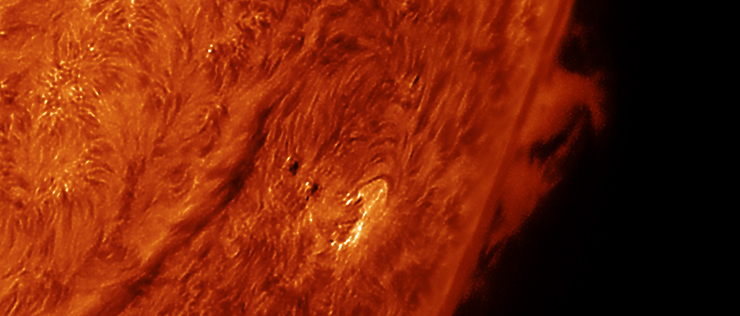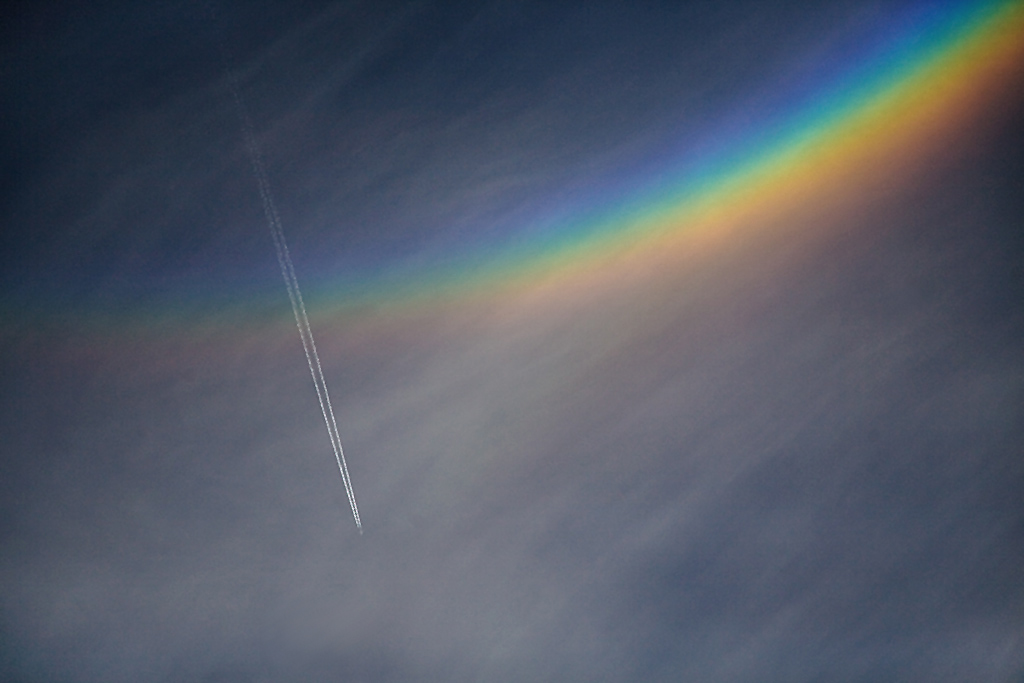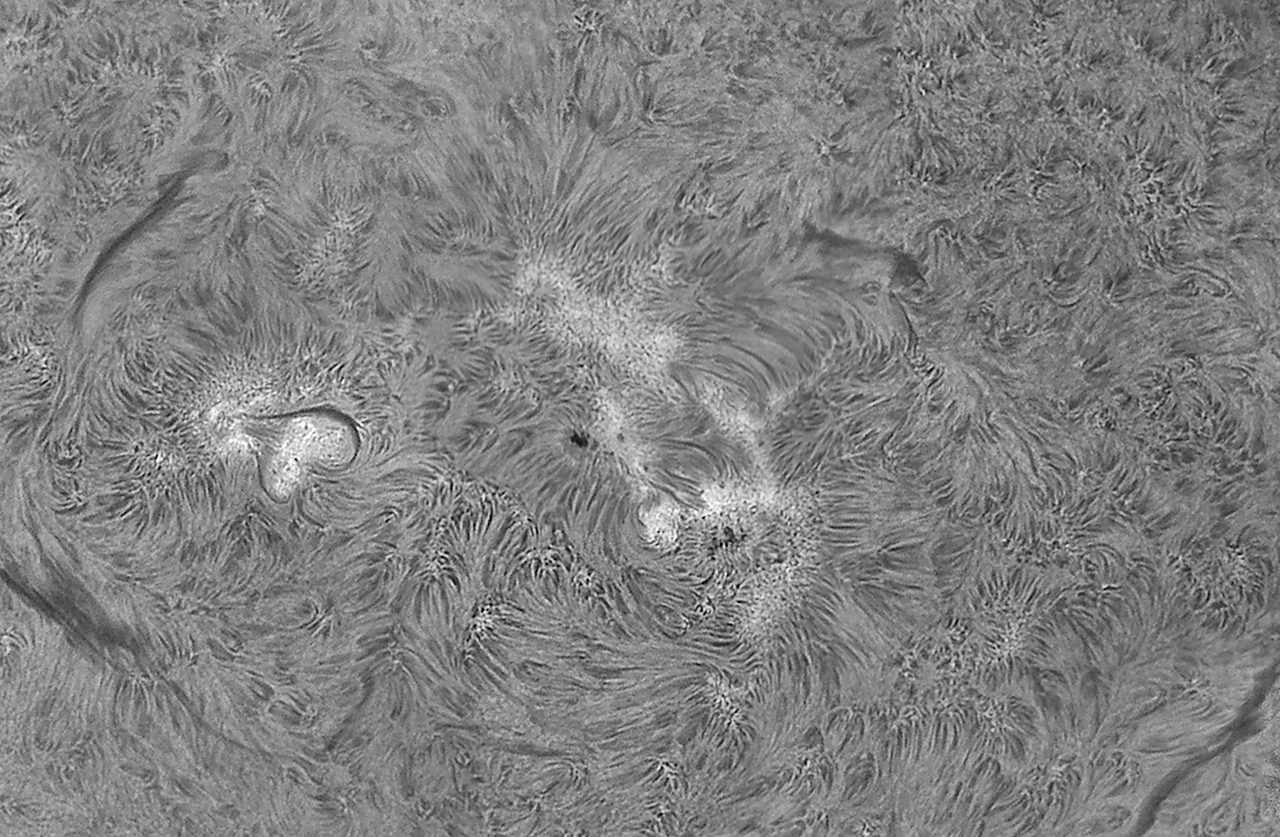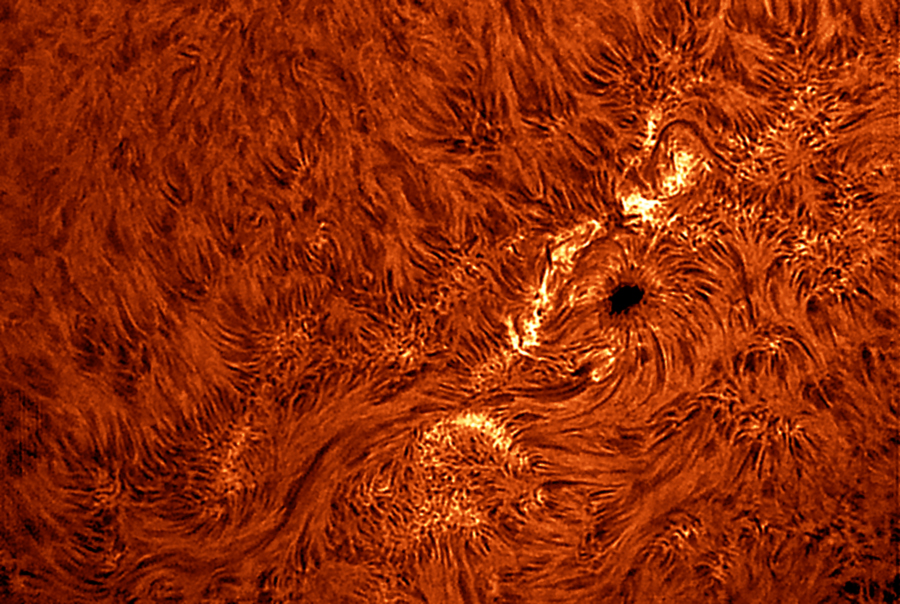|
I collected several GB of data in the cul de sac; this is just the most spectacular group. Seeing was awful, so I took long clips which I concatenated in VirtualDub before asking AVIStack 2 to pick the best 125 frames. The b/w image above comes from 2,400 frames; the color from 1,700. High, thin clouds made prominence photography challenging:
The same high clouds that made solar photography tough today made this photograph possible:
That's the most vivid circumzenithal arc I've ever seen. Right click and "view image" to see it at higher resolution. (Canon 5D, 24-105 F4L @ 95mm)
11/16/2012. Another day, another 50GB. The black and white image is a six-frame mosaic of sprawling active regions 1614 and 1615. The color shot is a look at (hyper) active region 1613. I was observing from the cul de sac using the 90mm solar outfit powered from the Honda's auxillary power outlet (a cigaette lighter plug by any other name), and, as usual, the best 150 frames from each 1GB clip were used to produce these web-sized distillations:
Right click and "View Image" for larger images
Today's skies offered excellent seeing with just enough high haze to light up a sun dog to the west of the Sun from time to time. The good conditions let me use 1GB clips to good advantage, though I couldn't resist a few massive files to see what could be done with them. The color photo there comes from a 2,400 frame clip; I'm sure finer detail can be teased out of it. Seeing was quite slow and of small amplitude. You can see stuff when the pond is this still. 11/17/2012. You'd know some physics if this frame held no mysteries: here are the hot and "cold" (hot and hotter?) plasma rivers surrounding active region 11613 on the Sun. It's a 3-frame mosaic made from our cul de sac -- best 150 out of 900 frames times three, aligned, stacked, and sharpened to defeat atmospheric turbulence. The 21st Century is a GOOD time to be an amateur astronomer.
:: top ::
|
© 2012, David Cortner
